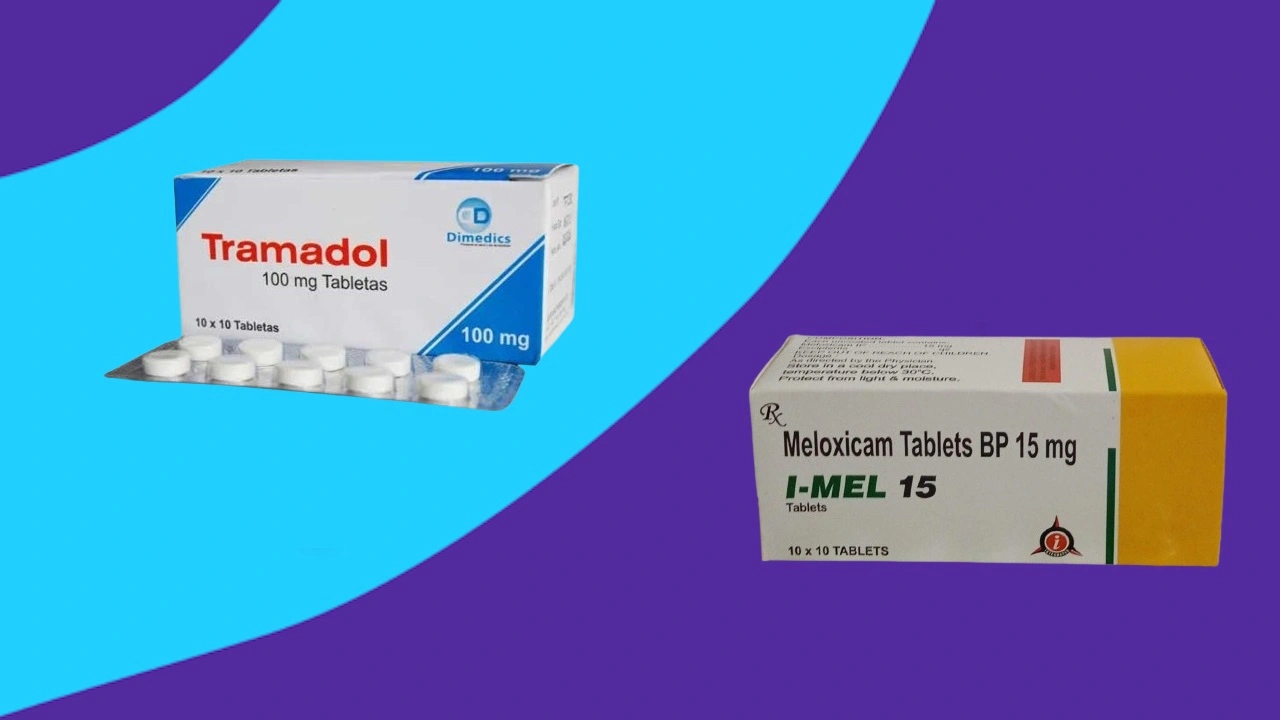Two medications that are frequently prescribed for managing pain are meloxicam and tramadol. While both offer pain relief, they belong to different drug classes and have distinct mechanisms of action, potentially leading to varying side effects and precautions.
What is Meloxicam?
Meloxicam is a non-steroidal anti-inflammatory drug (NSAID) that belongs to the oxicam class. It works by inhibiting the production of prostaglandins, which are chemicals in the body responsible for causing inflammation, pain, and fever. Meloxicam is commonly prescribed for the treatment of osteoarthritis, rheumatoid arthritis, and other inflammatory conditions associated with pain and swelling.
What is Tramadol?
Tramadol, on the other hand, is a synthetic opioid analgesic used to manage moderate to severe pain. Unlike traditional opioids, tramadol has a unique mechanism of action that involves binding to specific receptors in the brain and inhibiting the reuptake of neurotransmitters like serotonin and norepinephrine. This dual action contributes to its pain-relieving properties while potentially reducing the risk of some opioid-related side effects.
Similarities and Differences:
While both meloxicam and tramadol are effective in managing pain, they have distinct mechanisms of action and potential side effects. Meloxicam, being an NSAID, primarily targets inflammation and pain associated with inflammatory conditions, whereas tramadol is more commonly used for managing various types of acute or chronic pain, including neuropathic pain.
One notable difference is that tramadol is a controlled substance due to its opioid properties, while meloxicam is not a controlled substance. This means that tramadol has a higher potential for abuse and dependence, and its prescribing and dispensing are subject to stricter regulations.
Potential Side Effects:
Both meloxicam and tramadol can cause side effects, and it is essential to weigh the benefits against the risks for each individual patient. Common side effects associated with meloxicam may include gastrointestinal discomfort, headache, dizziness, and increased risk of cardiovascular events, especially with long-term use.
Tramadol, on the other hand, can cause side effects such as nausea, constipation, dizziness, drowsiness, and an increased risk of serotonin syndrome, particularly when combined with certain medications that affect serotonin levels.
Managing Pain:
The decision to prescribe meloxicam or tramadol for pain management depends on various factors, including the type and severity of pain, the patient’s medical history, potential drug interactions, and individual risk factors. In some cases, a combination of both medications may be considered to achieve optimal pain relief while minimizing side effects.
For acute or chronic inflammatory conditions like osteoarthritis or rheumatoid arthritis, meloxicam may be the preferred choice, especially for patients with a lower risk of gastrointestinal or cardiovascular complications. Tramadol, on the other hand, may be more suitable for managing moderate to severe pain, including neuropathic pain or post-operative pain.
Talking to Your Healthcare Provider:
It is crucial to have an open and honest discussion with your healthcare provider regarding the choice of medication for managing pain. They will evaluate your medical history, current medications, and potential risks to determine the most appropriate treatment plan. Be sure to disclose all medications, supplements, and any underlying health conditions to your healthcare provider to minimize the risk of adverse interactions or side effects.
Monitoring and Precautions:
Regardless of the medication prescribed, regular monitoring and follow-up appointments are essential. Your healthcare provider may recommend periodic blood tests, monitoring of vital signs, and assessments for potential side effects or complications.
It is also important to follow dosage instructions carefully and never adjust or discontinue medication without consulting your healthcare provider. Abrupt discontinuation of certain pain medications, such as tramadol, can lead to withdrawal symptoms and should be avoided.
Meloxicam and Tramadol Comparison :
| Characteristic | Meloxicam | Tramadol |
| Drug Class | Non-steroidal anti-inflammatory drug (NSAID) | Synthetic opioid analgesic |
| Mechanism of Action | Inhibits prostaglandin production, reducing inflammation and pain | Binds to opioid receptors and inhibits neurotransmitter reuptake |
| Commonly Used For | Osteoarthritis, rheumatoid arthritis, inflammatory conditions | Moderate to severe pain, including neuropathic pain |
| Controlled Substance | No | Yes |
| Potential Side Effects | Gastrointestinal discomfort, headache, dizziness, increased cardiovascular risk | Nausea, constipation, dizziness, drowsiness, serotonin syndrome |
| Purchase Online? | Out of Stock | Buy Tramadol Online |
Conclusion:
Managing pain effectively requires a careful evaluation of the available treatment options, considering the individual patient’s needs, medical history, and potential risks. Both meloxicam and tramadol offer pain relief, but their distinct mechanisms of action, potential side effects, and precautions should be weighed carefully. Open communication with your healthcare provider, adherence to dosage instructions, and regular monitoring are essential for ensuring safe and effective pain management. Ultimately, the decision to prescribe meloxicam or tramadol should be based on a comprehensive assessment by a qualified healthcare professional.

